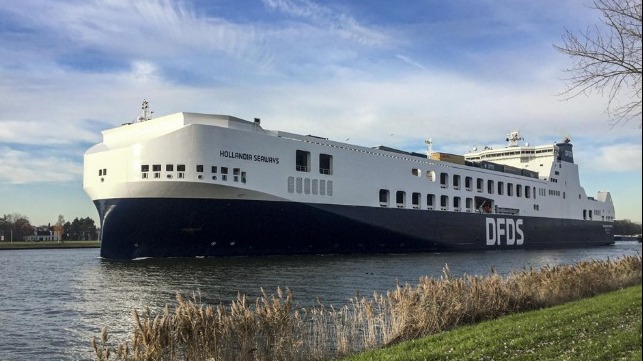DFDS Seaways and Maersk are joining with leaders from the agricultural industry in a project led by the Danish investment firm Copenhagen Infrastructure Partners (CIP) for the establishment of Europe’s largest production facility of CO2-free green ammonia. The companies participating in the project are committing to work towards realizing the establishment of the facility and the use of the fuel to reduce carbon emissions from their operations.
To be known as Power-to-X, the facility which will be located in western Denmark will convert power from offshore wind turbines to green ammonia. With an electrolysis plant capacity of 1 GW, they expect to be able to reduce CO2-emissions by about 1.5 million tons CO2 yearly, or the equivalent to removing 730,000 cars from the roads permanently. The green ammonia produced from the facility will be used as fuel for the shipping industry and CO2-free fertilizer for the agriculture sector while the excess heat generated in the process would be used to provide heating for around one-third of the local households in the communities around the plant.
CIP anticipates that it would cost approximately $1.2 billion to build the facility. They are currently seeking investors for the project and expect that the investment decision would be reached by 2023. The plant could enter commercial operations in 2026.
“With this project, we support further development to cut CO2 emission from agriculture and shipping in Denmark, through the use of CO2-free green fertilizers and green fuel. The agriculture and shipping industries are industries, which are embarking on a journey of decarbonization. Solutions such as Power-to-X are key for these industries to take the next big leap within the decarbonization,” says Christian Skakkebæk, Senior Partner in CIP, responsible for the Energy Transition Fund.
Ocean-going shipping and the agricultural sectors have been identified as early targets for ammonia fuel due to the challenges of directly electrifying their operations. While the shipping industry is seeking alternative fuel sources to power global shipping, ammonia production which is critical to the fertilizers necessary to continue to hold a high level of agricultural production contributes to roughly 1.4 percent of global CO2 emissions. By replacing chemical fertilizer with green fertilizer at the field, Danish Crown, Europe’s largest pork producer, estimates CO2 could be replaced by 1.5 million tons.
“There is a very real sense of urgency in curbing shipping’s emissions, and we must develop scalable carbon neutral fuels. Therefore, we welcome this project as an important development of green ammonia supply in the future,” said Henriette Hallberg Thygesen, CEO of Fleet & Strategic Brands, A.P. Moller – Maersk. “We consider green ammonia as a promising option for marine fuels and a dual-fuel engine for ammonia is under development. We are optimistic that ammonia, along with methanol and alcohol-lignin blends will be powering Maersk-vessels in the future.”
DFDS’s CEO Torben Carlsen highlighting the challenges facing shipowners highlighting that they are building vessels for today’s fuel while focusing on the opportunities for the future. He noted that despite the efforts underway that the green fossil alternative does not currently exist. “The cooperation of fuel users and producers along with scientists and society is the fastest way to make sustainable fuels available as realistic alternatives to the fossil fuels we combust in our vehicles and vessels today. I hope that this partnership will help us reach our goal of operating zero-emission ferries and trucks much faster than without the partnership,” said Carlsen.
CIP says that it is looking forward to further collaboration with the companies to bring the facility from the planning stage to the building stage while also seeking additional investors and commercial clients.
Source: The Maritime Executive






